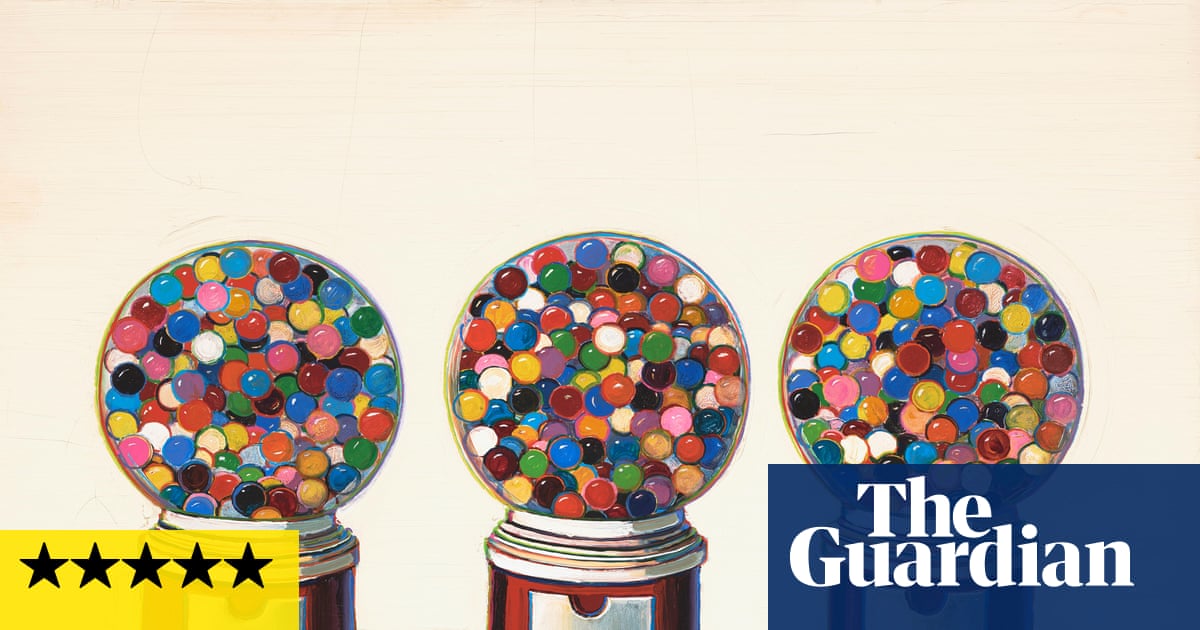
"His background offers the biggest clue to how he created his kitschy universe of pastel pastries and gloopy cherry pies. He came to art via illustration and animation, becoming an apprentice at Walt Disney Studios before going on to work as a cartoonist and motion picture animator. When you paint for a huge, mainstream audience, you get a firm grasp on directness and legibility, on how to get your ideas across immediately, like a cream pie to the face."
"Then in the 1950s he met Elaine and Willem de Kooning and a bunch of other abstract expressionists and hey presto, you've got a flavour combination that works: a background in art for a big audience, and a knowledge of modern, conceptual experimentation. Delicious. The earliest works here, from 1956, are of a butcher's counter and a pinball machine quintessential Thiebaud themes but the marks are thick and grubby. It's all dark, filthy, almost pushing towards abstraction."
Wayne Thiebaud painted iconic cakes, sweets and gumball machines rendered as pastel pastries and glistening pies that tempt viewers with immediate sensory appeal. His imagery merges a background in illustration and animation with encounters from 1950s abstract expressionism to create legible, direct compositions informed by formal experimentation. The work updates the still-life tradition while probing mid-century American consumerism and mass production. Early 1956 pieces verge on muddy abstraction, but by the early 1960s his signature treatment—thick paint, vivid color, and clear forms—arrives. Exhibited in the first UK museum show at the Courtauld, the paintings balance kitsch allure with serious material engagement.
Read at www.theguardian.com
Unable to calculate read time
Collection
[
|
...
]